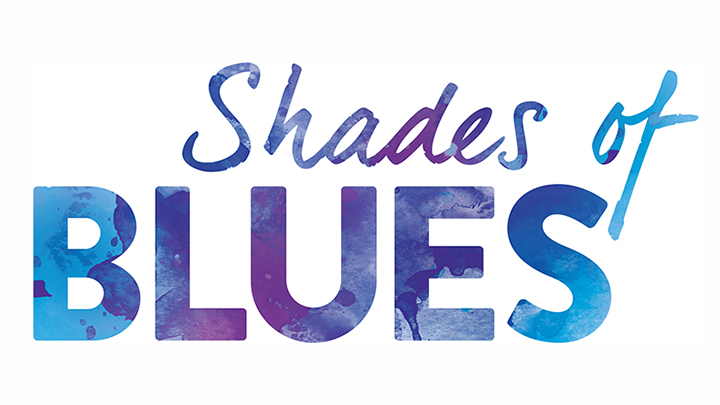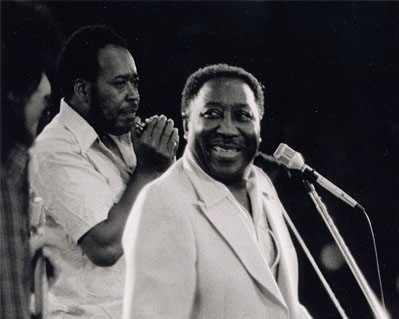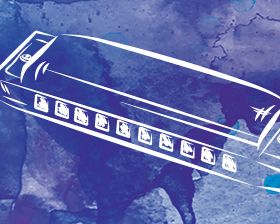The blues is the roots; everything else is the fruits.
By Marcia Friedman
The blues was born in the midst of difficult living conditions in the deep South—and those very conditions ultimately convinced many people to move. From around 1916 to 1970, some 6 million African Americans moved north and west and from rural areas to cities—a historic mass movement known as the Great Migration. They took their culture with them, everything from their food to their blues. Their new homes would present new challenges and opportunities, and America—and the blues—would never be the same.
A Hardscrabble Life
It isn’t difficult to see why so many people wanted to leave the South in the early 20th century. Many African Americans worked the land as sharecropping farmers, an arrangement that benefited the landowner greatly but made it difficult for the farmers to make ends meet and save money—and what little fortunes they had could be completely wiped out by floods or crop failures. Meanwhile, Jim Crow laws across the South mandated that blacks use separate facilities that were often inferior, including everything from schools to water fountains. Even though the white supremacist Ku Klux Klan had been officially dissolved in 1869, it continued underground, and African Americans faced ongoing intimidation, threats, and violence.
Opportunity Calls
After World War I broke out in 1914, European immigration that had been supplying workers for northern industries soon stopped. Northerners began trying to recruit African Americans to work in factories, railroads, slaughterhouses, the automobile industry, and more. By some accounts, a factory worker in the North could earn 3 times as much as a sharecropper in the rural South. African Americans started moving north in hopes of creating better lives for themselves and their families.
Cities near the Delta, like Memphis and St. Louis, had already been receiving transplants, but in this new migration push, greater numbers moved farther north, especially Chicago, New York, Detroit, and Philadelphia. The lean times of the Great Depression in the 1930s slowed the migration, but it resumed again due to the need for more workers during World War II in the early ’40s. This time, in what’s often called the Second Great Migration, African Americans not only moved north but also began moving west in greater numbers.
These new northern and urban lives presented challenges. Many industrial jobs were backbreaking and dangerous. Women had fewer opportunities and had to compete for domestic work. Although there were no Jim Crow laws, racial tensions as well as housing costs and restrictive housing rules made it difficult for newcomers to find places to live. They ended up forming their own communities within the poorer parts of cities.
New Blues
In their new home cities, musicians had new stories to tell through music. They also had more styles at their fingertips, and they melded blues with local musical traditions like ragtime, jazz, country, and zydeco, thereby creating new regional styles of blues. Artists also experimented with rhythms, instrumentation, and more and created new substyles or subgenres of blues.
However, the blues may have undergone its most momentous transformation in Chicago starting in the 1940s. A popular destination for many Mississippi blues artists, Chicago offered a dynamic music scene, incredible musical talent, and trends toward bigger bands and amplification (plugging in instruments to get a bigger sound). When Muddy Waters brought the Delta blues to the city and plugged in his guitar, the new urban and energetic sound of his playing electrified the blues music scene, literally and figuratively, and helped launch an exciting and influential new subgenre known as Chicago, urban, or electric blues.
Compare and contrast the sounds of Muddy Waters from his Delta blues days to his Chicago blues sound:
Delta blues style: “Country Blues” (1941)
Chicago blues style: “Mannish Boy”
In 1936, Mississippian Willie Dixon also moved to Chicago. Already a skilled blues singer, he quickly learned bass and guitar, but found extraordinary success finding talent and composing, arranging, and producing songs—more than 500 during his lifetime. He worked and played with some of the greats, including Muddy Waters, Chuck Berry and Howlin’ Wolf and many consider him instrumental in creating the Chicago blues sound and paving the way for rock ’n’ roll.
Going Transatlantic
In the 1950s and 60s, the blues even crossed the Atlantic Ocean to Great Britain. There, young musicians enthusiastically embraced the Delta and Chicago blues sounds and then adapted them. One up-and-coming British group named their band after Muddy Waters’ song, “Rollin’ Stone.” The Rolling Stones, along with blues-influenced guitarist Eric Clapton, would go on to help pioneer a new genre of blues rock and send that music—as well as their reverence for the blues—back to America.
Listen to Willie Dixon perform his song “Little Red Rooster” (written in 1961 but not released on record until 1970), which was later covered by the Rolling Stones in 1964.
The blues also influenced musicians stateside, of course, including Elvis Presley, who blended the blues he heard growing up in Mississippi and Memphis with country, pop, and other styles. Similarly, Chuck Berry took inspiration from blues musicians like T-Bone Walker and borrowed from the up-tempo boogie-woogie style of blues. By creatively fusing the blues with new sounds and styles, Presley, Berry, and others helped revolutionize music—a pattern that has continued. Today new generations of guitarists, like Kenny Neal, Robert Cray, Eric Gales, and John Mayer, as well as singers and other musicians, are mastering blues styling and making it all their own. And the blues has even crossed the ocean again, fusing with African styles to form a newer subgenre called desert blues.
Still Moving
Although the Great Migration ended, the blues has shown it will never stand still. The blues continues to inspire writers, poets, filmmakers, composers, photographers, musicians, and many others. And it continues to weave its way into American art and culture in new and thrilling ways. For example, blues met electronica music when artist Moby sampled the blues song “Joe Lee’s Rock” by Boy Blue, Willie Jones and Joe Lee in his song “Find My Baby” from the 1999 platinum album Play. Moby’s record, in turn, helped reignite interest in older blues songs.
In another example, the blues meets the hip-hop-infused, genre-bending Broadway smash Hamilton. The musical features boogie-woogie in “What’d I Miss,” a number performed by rapper Daveed Diggs in the role of Thomas Jefferson. (The boogie-woogie begins at minute 1:37 in the clip.) And these are just two of many examples.
This remarkable form of music was created mostly on dusty fields with little more than voices and souls with plenty to say. But as it has traveled America and the globe, it has become the foundation and inspiration of many forms to come after. The blues continues to shape America’s musical landscape and prove time and time again that, in the words of innovative jazz musician Wynton Marsalis, “… blues never lets tragedy have the last word.”


